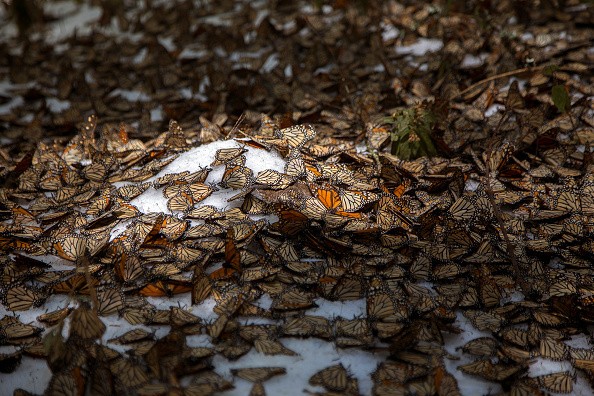Recent research has revealed that monarchs are being attacked by rats when they fall to the ground in central Mexico, where the largest winter aggregations occur. The black-eared mouse (Peromyscus melanotis) consumes as much as 40 of these bitter-tasting insects.
The chemical armor of monarch butterflies is particularly effective. Toxic cardenolides in the plants they eat poison them, making them unappetizing to most predators, but not all as study recently revealed.

Insight into the Discovery
Studying mice at California monarch overwintering sites, University of Utah biologists discovered that mice can also eat monarch butterflies, as per Phys.org.
The western harvest mouse (Reithrodontomys megalotis) eats the grounded monarchs, according to the researchers, who were working at Pismo State Beach Monarch Butterfly Grove, one of the greatest monarch aggregations outside of Mexico.
The fall of the western monarch butterfly isn't caused by rodents, according to the authors, nor are monarchs the only item mice may eat. Rather, it serves as a reminder of how little scientists know about the interactions that may be lost if insect populations drop.
Right now, the world is in the midst of an insect Armageddon. Approximately 40% of the investigated invertebrate species are under threat, and over 70% of flying insect biomass has already been depleted, according to estimations.
On its own, this is a disaster, but it will also have a disastrous effect on the other species that feed on insects, said postdoctoral researcher Sara Weinstein, the study's principal investigator.
Efforts to Conserve Monarch Butterfly
In order to raise awareness about the importance of conservation efforts for western monarchs and other western butterflies, it is necessary to highlight the multiple ways in which these animals are tied to other organisms, birds, mammals, and humans.
This research helps the world better understand how a decline in butterfly populations affects the food supply for other native species, said senior conservation scientist Emma Pelton of the Xerces Society.
Ecology published the study on December 12, 2021.
In February 2020, researchers began to trap rodents in the grove to explore mouse-monarch interactions. It was decided to release the rodents, but the feces were saved for testing and found to contain monarch DNA in one sample.

Researchers Disturbed by the Decline in Monarch Population
Early in the winter, while monarchs were dispersing from their roost, a survey was conducted to determine how many monarchs were still around for the mice to eat.
A place where 100,000 monarchs used to roost in 2020 had less than 200 monarchs in the year 2020. In other words, researchers had to adapt their strategy
Weinstein used camera traps to catch wild harvest mice eating lab-raised monarch carcasses. She also caught a few mice and gave them monarchs as a thank you for their help. The belly and thorax were the preferred regions of the monarchs for the mice since they were high in calories and low in toxins.
A genetic mutation at the location where cardenolides bind in monarchs is likely to provide rodent species with some resistance to the toxins, according to Weinstein.
Over 90% of western monarchs have vanished in the last 40 years, making it more difficult to find this meal. The environment that relies on them for sustenance will be adversely affected by the loss of these beautiful creatures.
Related Article : Butterfly Guides in Mexico Hopes For an Increase in Monarch Population
For more news, updates about butterflies and similar topics don't forget to follow Nature World News!
© 2025 NatureWorldNews.com All rights reserved. Do not reproduce without permission.





